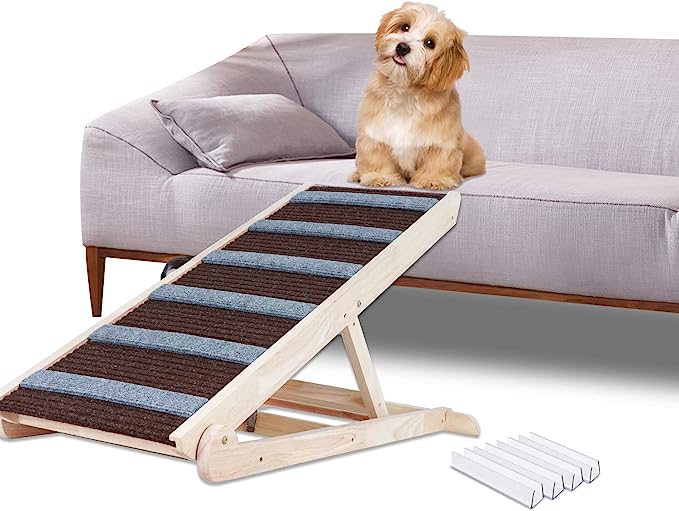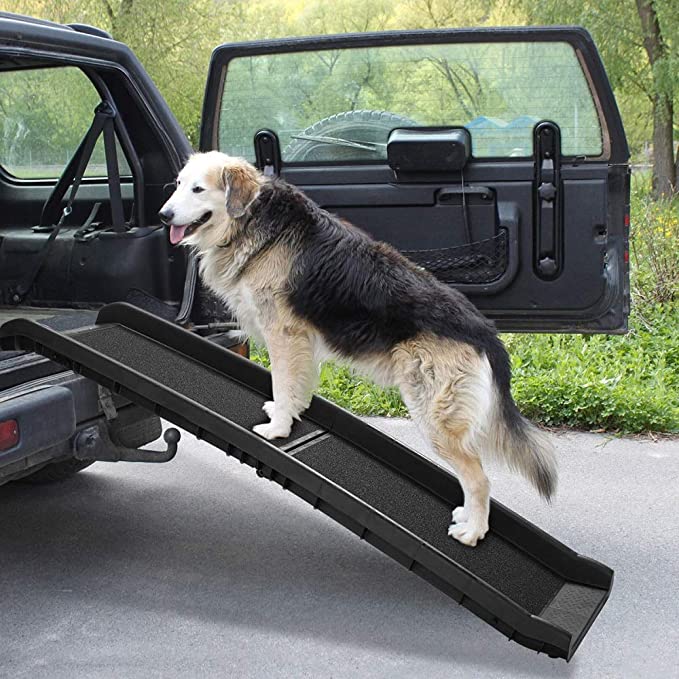When considering whether to choose an indoor or outdoor dog ramp, it’s essential to evaluate the specific needs and circumstances of your pet. Both options have their own advantages and disadvantages. Here are the pros and cons of indoor and outdoor dog ramps:
Indoor Dog Ramps:

Pros:
- Convenience: Indoor ramps provide a convenient way for your dog to access elevated surfaces within your home, such as furniture or beds. They allow your dog to move around comfortably without the need to jump or strain their joints.
- Protection from the Elements: Indoor ramps keep your dog sheltered from outdoor weather conditions such as rain, extreme heat, or cold. This is particularly beneficial for small or short-haired breeds that may be more sensitive to temperature changes.
- Design Integration: Indoor ramps can be designed to match your home’s interior décor, blending seamlessly with your furniture or staircases. They can be customized to fit your specific space requirements and aesthetic preferences.
Cons:
- Limited Outdoor Access: Indoor ramps only provide access within your home. If your dog needs assistance getting into vehicles, reaching outdoor elevated surfaces, or navigating stairs outside, an indoor ramp may not meet those needs.
- Space Constraints: Indoor ramps require sufficient space within your home, which may not always be feasible, especially in smaller living spaces. You need to consider the available floor area and the layout of your rooms when installing an indoor ramp.
Outdoor Dog Ramps:

Pros:
- Versatility: Outdoor ramps offer a broader range of accessibility options. They can be used to assist your dog in entering and exiting vehicles, reaching elevated outdoor platforms, such as decks or porches, or navigating stairs outside.
- Durability and Weather Resistance: Outdoor ramps are specifically designed to withstand various weather conditions. They are built with durable materials that can withstand exposure to rain, sunlight, and temperature fluctuations.
- Extended Mobility: With an outdoor ramp, your dog can enjoy more outdoor activities and have easier access to areas such as gardens or outdoor play areas. This can enhance their overall mobility and quality of life.
Cons:
- Limited Indoor Use: Outdoor ramps may not be suitable for providing access to indoor surfaces like furniture or beds. If your dog needs assistance primarily indoors, an outdoor ramp may not fulfill those needs.
- Installation and Portability: Installing an outdoor ramp can be more complex than an indoor ramp, requiring proper anchoring or attachment to ensure stability and safety. Additionally, outdoor ramps are typically less portable, making them less convenient for travel or use in multiple locations.
- Exposure to Outdoor Hazards: While outdoor ramps allow for outdoor accessibility, they also expose your dog to potential hazards present in the environment. These may include slippery surfaces, uneven terrain, or exposure to wildlife or other animals.
Ultimately, the choice between an indoor and outdoor dog ramp depends on your dog’s specific needs and your living situation. You may also consider a combination of both, with an indoor ramp for indoor accessibility and an outdoor ramp for outdoor adventures.
Ernest is pet owner, software developer and dad of 3